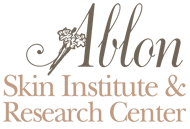Smooth Out Lips, Cheeks, Wrinkles
and Acne Scars
With the advent of liposuction surgery, autologous (self to self) fat transfer has recently been revitalized. Autologous fat transfer involves transplanting one’s own live fat cells from one area of the body to another. The usual donor sites are the abdomen, or thighs where variable amounts of localized fat accumulations reside. The fat is gently removed using special techniques, cleaned and re-injected into the desired areas such as lips, cheeks, deep wrinkles, or acne scars.
What Is the history of fat transfer?
Autologous fat transplants have been used since the 1890’s. For many years, solid pieces of fat have been surgically transplanted to fill facial defects. More recently fat has been harvested from the donor areas through needles and re-injected. Although this technique is relatively new, several authors have reported a 60-80% survival of the transplanted fat cells over several years. It should be noted that whatever fat has survived several months is considered permanent. Since the fat is considered self, no rejection takes places. The survival of the fat is dependent upon a new blood supply forming at the new site. This is why the smaller individual fat cells survive better than the larger pieces of fat surgically implanted. At the present time, studies are being done to more closely look at factors that affect the long-term fat survival.
What Is the procedure like?
Prior to having fat transplantation, blood tests may be done if there is any question of bleeding problems. The patient is to avoid aspirin, prostaglandin inhibitors (i.e. Motrin or Advil), Vitamin E, and abstain from alcohol or smoking for two weeks prior to and two weeks after the procedure. An antibiotic will be started one day prior to the procedure and continued six days after. If anxiety sets in, Valium may be taken one hour prior to the procedure as ordered by Dr. Ablon. The donor and recipient sites will be carefully cleansed and injected with a diluted anesthetic solution. Once the areas are numbed, the fat is painlessly harvested.
The fat is removed without disrupting the underlying nerves or vessels and collected in small tubes. This fat is then washed and cleaned, and injected into the desired site. Following injections, the fat can be molded into proper position by the doctor’s hands. The patient will usually note that the area is slightly swollen since a small amount of extra fat is injected into the area. This is done since approximately 1/4 – 1/2 of the fat does not survive the transplantation, and slight over-correction is needed for a better final result. After the procedure, sutures may be placed at the opening to the donor site, and a pressure dressing applied. Usually only steri-strips are placed on the recipient site.
What to expect?
There is frequently noticeable swelling and bruising in the area of fat transfer, and the area may be over-corrected as discussed above. This resolves in a week or so, however, in some cases may last longer. Both the donor and recipient sites may be sore, but severe pain is unusual and should be reported to Dr. Ablon. The pressure dressings in the donor site and sutures will be removed in 5-7 days. Complications to this procedure are infrequent, but can include those associated with any surgical procedure including infection, bleeding, or slight irregularity in contour or pigmentation.
To schedule a consultation, call (310) 727-DERM (3376).





